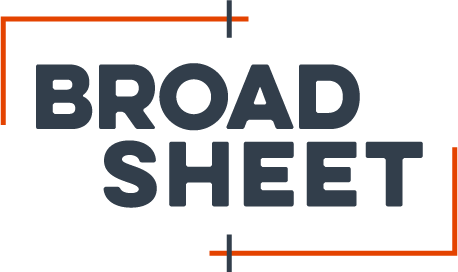Navigating Trust in an AI-driven landscape
By Kyle Kuhnel, Managing Director of Broadsheet
Across both the communications and advertising fronts, AI-induced havoc has already begun. Consider the rise of “malvertising” schemes that use AI-generated ads to entice users to click on malicious links, and the new challenges for brand safety as junk content becomes exponentially easier to spin up and pass on to media buyers. Trust, especially in communications, is built on accuracy and truthfulness – and in the age of generative AI, the truth is easier to mimic and much harder to come by.
It's important to note that the impact of AI on trust is complex and multifaceted. While AI has the potential to enhance efficiency and convenience, it also introduces new challenges and risks that can influence how individuals and communities perceive technology and those who develop and deploy it. If bots can be programmed to pass as people and global leaders can be deepfaked, how can we believe the information we read, hear, or see? It’s an issue that key experts on AI have called an existential threat to interpersonal interaction, democracy, and the social fabric.
It's heavy stuff, but it’s also the key to PR professionals' role in the Brave New World ahead. After all, our essential business is building trust and credibility. PR is an industry that stands at the nexus between brands and institutions, reporters and the public – and helps each one believe in their work and the messages they share.
We build trust between our clients and their customers that their brands are worth buying from and partnering with. Trust with editors and reporters that our stories are worth considering. And most importantly, the trust of our clients that we can serve as the proper stewards to bring their narrative to the world. It’s no coincidence that one of the most celebrated rankings in the PR world is Edelman’s Trust Barometer. In an era of the breakdown of trust, our role is to help our clients repair and protect the trust between customers and their clients.
A focus on trust is more than just a philosophical framing for a changing work environment. Instead, it’s a framework that can help us understand the coming era. While AI can provide an enormous lift in automating day-to-day tasks – there’s an important distinction between work that’s done and trust that’s earned. Executing tasks is what machines are built for. Conversely, trust hinges on insights, strategy, relationships, and the ongoing work of making those relationships strong. All of that is human work grounded in empathy, perspective, and a deep understanding of the human element. Trust is a job for people.
For instng-term relationships are the brands you work with looking to foster with the people they serve? What corporate image are your clients looking to convey, and what messages will best deliver on those ideas? How does a client’s culture impact the way they communicate? These are deep strategic questions that - at least for now – algorithms alone can’t answer.
Similarly, an AI tool can help you draft a press release, manage press lists, and develop content – saving you countless hours of work (PrProphet, PressPal from Muck Rack, and Propel’s Amiga are just three tools that fill these roles). But AI won’t be able to tell you the underlying message you should share with the reporter – and certainly can’t replace a genuine working rapport you’ve built with your contacts that drive them to trust your pitches over the many others they could respond to on any given day.
If you’re in the tactics business, AI that automates the tasks amounts to a serious – perhaps insurmountable -- challenge. But for the strategically-focused agencies, thinking in terms of trust provides a path to opportunity. In the near term, it can help guide questions about what to automate, what to leave in human hands, and how to handle human-AI hybrid tasks.
Trust-building also gives us a roadmap for the future. What can your business provide that leans into trust – from more strategic positioning to more community-building outreach? Now where can generative AI make these efforts easier to create and amplify? The answers to these questions can be your roadmap for the AI-enabled years ahead.
And what of the future of trust more broadly? Will the trust that holds us together – and that’s tethering every day – crumble under the stresses of AI?
All of this gives me real optimism for the PR industry. In an era of decaying trust, the strategies we build give communicators a fighting chance.
